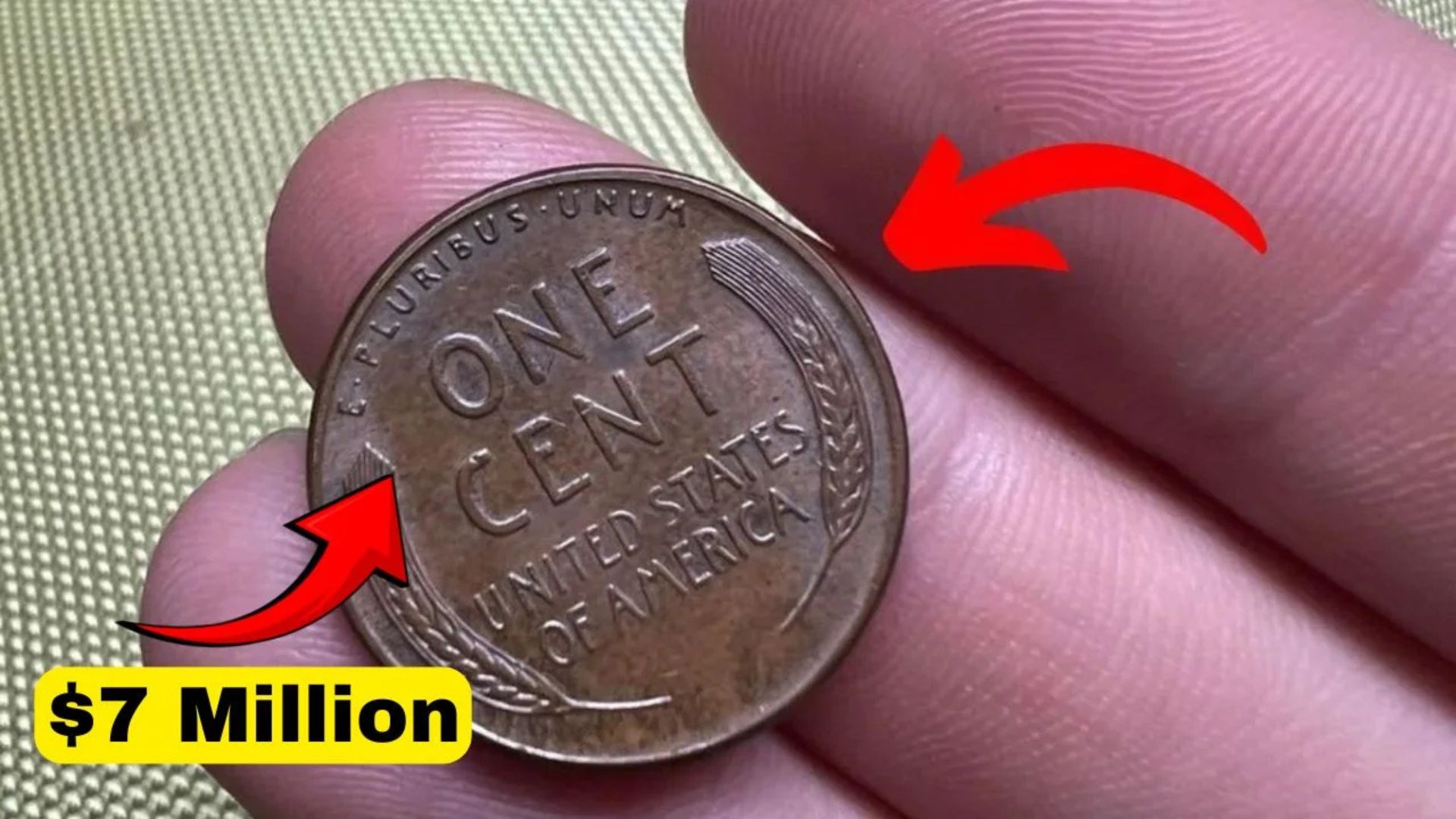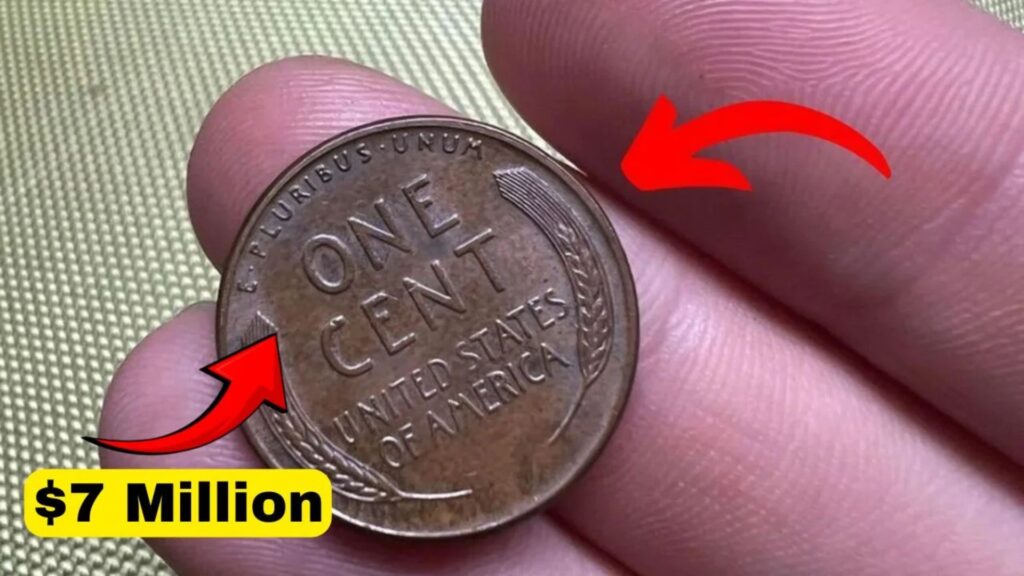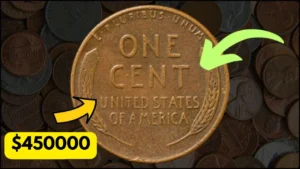Imagine discovering a coin in your pocket worth more than your car. Sounds like fiction? Think again. A rare 1943 copper Lincoln wheat penny, struck by mistake during World War II, recently sold for nearly $7 million, reminding collectors and casual finders alike that treasure could be hiding in plain sight
What Is a Lincoln Wheat Penny?
Lincoln wheat pennies, minted from 1909 to 1958, were the first U.S. cents to feature a president—Abraham Lincoln—on the obverse. The reverse displayed two wheat stalks, hence the nickname. These coins are beloved by collectors for their rich history and rare varieties. Many LSI keywords you might use: wheat penny value, Lincoln cent errors, rare penny worth millions.

1943: A Wartime Minting Blunder
During World War II, copper was in high demand for munitions. In 1943, the U.S. Mint switched to steel planchets coated with zinc. But amidst the transition, a few copper blanks accidentally remained in the hopper. These produced the legendary 1943 copper wheat pennies—astonishing anomalies from a period when pennies weren’t supposed to be copper
Only a few dozen are believed to exist. One copper penny minted in Denver recently sold for nearly $7 million, smashing previous records and proving that historical accidents can hold astronomical value
How Experts Assess Value
What makes one penny shoot from face value to millions? Experts weigh multiple factors:
- Date & Mint Mark
- 1943-D (Denver) copper pennies are rarest—only one confirmed, recently sold for $7 M.
- Philadelphia and San Francisco copper varieties are slightly more common (only dozens exist)
- Metal Composition & Weight
- Genuine copper pennies weigh about 3.11 g and are non-magnetic.
- Steel cents stick to a magnet—so check if yours does Condition & Luster
- Graded condition (MS–Mint State scale) dramatically affects resale value.
- Sharp details—especially on the rim—can add hundreds of thousands
- Authentication
- Many fakes exist (steel pennies copper-plated). Professional grading by PCGS or NGC adds trust and value
Other Rare Lincoln Cents
While the 1943 copper penny grabs headlines, collectors know many other valuable wheat cents exist:
- 1909‑S VDB – The very first Lincoln cent with VDB initials, struck in San Francisco. With just 484,000 minted, pristine examples fetch $50k+, often crossing six figures
- 1955 Doubled Die Obverse (DDO) – The date and lettering appear visibly doubled. With about 20,000 minted, top-condition pieces can sell for $50,000+
- 1922 “No D” Denver Mint – Some Denver coins lack the “D” mint mark due to die polishing. The error is rare and valued at $20k–$100k depending on grade
- 1944 Steel Penny – Another war-time metal mix-up left steel planchets in the presses into 1944. A Denver steel cent recently sold for around $1.7 million
- 1931‑S & 1914‑D Pennies – Low-mintage Denver and San Francisco coins are also prized; high-grade pieces fetch $75k–$330k
Real-Life Gold Rush: Stories from Collectors
- Heritage Auction, 2021 sold a 1943-D copper penny for $840,000, setting a new benchmark . Another example sold for over $500k earlier the same year—the copper rush of the understatement!
- One enthusiast shared that his 1955 doubled-die penny, graded MS64, fetched over $16,600, thanks to the crisp doubling of “Liberty” and the date
- In popular TikTok videos, experts advise non-collectors to magnet-test coins, weigh suspicious finds, and look for doubled lettering, citing how even minor details have netted $26,000+ for rare post-1958 cents
How to Know If You’re Sitting on a Fortune
- Check the year and mint mark on wheat pennies (1909–1958).
- Magnet test and weigh: strong magnet → steel; light? Copper.
- Look closely at text: doubling or missing letters on “Liberty” and date signal errors.
- Inspect condition: sharp details, strong luster ups value.
- Get graded by a reputable service if it’s a candidate. Certified coins command higher prices.
Why Collectors Love Them
- Extraordinary rarity – A handful of 1943 copper pennies out of billions minted.
- Historical significance – Tells the story of war, economic demands, and minting quirks.
- Blend of science and detective work – Chemistry meets history meets sleuthing.
- High investment potential – One coin can suddenly leap into the seven-figure stratosphere.
Expert Insights
“The 1943‑D bronze cent is the Holy Grail of wheat pennies,” says numismatist experts
Professional graders at PCGS emphasize that who certifies your coin matters. A rare date or error in low grade may bring tens of thousands; the same coin graded MS65 can multiply its value many times over.
Quick-Check Table (Featured Snippet Optimized)
Here’s a cheat sheet summary:
| Date & Type | Rarity | Value Range |
|---|---|---|
| 1943‑D Copper Wheat Penny | 1 known Denver | ~$7 million+ |
| 1943 Copper (P/S/D) | Dozens known | $300 k–$1 M+ |
| 1944 Steel (D/S) | 7–10 known | ~$1.7 M |
| 1909‑S VDB | 484k minted | $50 k–$360k+ |
| 1955 DDO | 20k minted | $16 k–$50k+ |
| 1922 No‑D Denver Penny | Rare | $20 k–$100k+ |
Final Takeaway: Could Your Penny Be Worth Millions?
Yes—and maybe more than millions! If you casually flip through an old coin jar and stumble upon a 1943 penny that’s copper-colored, non-magnetic, and perfect in shape, you’re holding a potential treasure.
But be cautious:
- Authenticate before celebrating.
- Beware of fakes—many are steel pennies plated to look like copper.
- Get graded professionally to realize full value at auction.
Even if you don’t have a $7 million penny, most rare wheat pennies are still worth far more than their face value—making coin collecting a satisfying and potentially lucrative hobby.
Pro Tips for Coin Hunters
- Always carry a magnet and scale when sorting coins.
- Join numismatic communities (PCGS forum, r/coins on Reddit) to learn and show photos.
- Use Google Lens or coin tracking apps to identify and spot rare varieties.
- Submit suspects to PCGS or NGC for grading—this paves the way to real cash.
In Conclusion
The tale of the $7 million Lincoln wheat penny is a thrilling reminder: historical quirks have modern rewards. A simple metal mix-up from 1943 became a collector’s Holy Grail. But the legwork—knowing mint marks, spotting errors, avoiding counterfeits, and getting certification—is where luck meets smarts.
So next time you reach for spare change, glance at the date. You might just be holding a fortune in your hand.
Ready to start a coin adventure?
Search 1943 pennies, check for copper, magnet test, and join a local coin club. The next big discovery could be pocket-sized—and priceless.
Let me know if you’d like a step‑by‑step guide to sorting and submitting coins!


